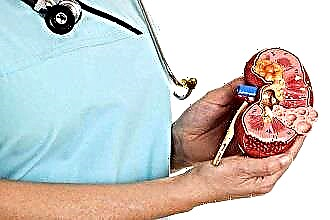A deviated nasal septum in most cases over time becomes the cause of many different problems, the most harmless of which is shortness of breath. The smaller the deformation, the easier it is to correct it. Moreover, it should not be postponed until later, because the achievements of modern medicine make it possible to correct the nasal septum in less traumatic ways. The days when surgery was the only possible way to correct a curvature of the nose are long gone.
Causes of the curvature
Before choosing a way to straighten the nasal septum, you must try to determine as accurately as possible why and how much it is curved. There are many reasons for this deformation. However, all of them can be conditionally divided into three large groups:
 traumatic: fractures, bruises and other injuries to the head and nose;
traumatic: fractures, bruises and other injuries to the head and nose;- physiological: congenital or genetically determined curvatures;
- compensatory: when the nasal septum is gradually deformed under the influence of external or internal factors (polyps, neoplasms, chronic swelling of the sinuses, etc.).
It is most difficult to align a severely injured nasal septum, especially if the bones were broken, and they had time to heal incorrectly. In this case, the only way out is classical rhinoplasty. It should be carried out in a stationary setting, after a thorough preliminary examination.
It makes sense to correct the physiological curvature of the nasal septum only when the active growth of bones ends - not earlier than by the age of 21-25. Otherwise, all the work done may be useless, since with further growth of the facial bones, they will again press on the nasal septum.
A special correction of the nasal septum, which is deformed due to chronic ENT diseases, may not be necessary. First, it is necessary to eliminate all factors causing it curvature: to cure chronic sinusitis, eliminate polyps, reduce or remove adenoids.
If the curvature has arisen recently, and conservative treatment is carried out correctly, the curvature may disappear on its own after a while.
Traditional methods
With a curvature of the nasal septum, treatment with alternative methods does not help at all. This must be understood and not wasted time, effort and money. Pinching your nose with clothespins (albeit expensive ones made of high-quality silicone), inserting dense turundas and rubber tubes at night and performing other dubious manipulations are not only pointless, but also dangerous.
 Firstly, there is a great risk of injuring the mucous membrane and bringing some kind of infection into the nose. Secondly, this leads to impaired blood circulation and provokes stagnation of mucus, which is already due to deformation. And most importantly, it is written everywhere that the minimum course of treatment is 2-3 months, and during this time you can undergo a full examination, remove inflammation, have an operation, have time to recover and forget about the problem forever!
Firstly, there is a great risk of injuring the mucous membrane and bringing some kind of infection into the nose. Secondly, this leads to impaired blood circulation and provokes stagnation of mucus, which is already due to deformation. And most importantly, it is written everywhere that the minimum course of treatment is 2-3 months, and during this time you can undergo a full examination, remove inflammation, have an operation, have time to recover and forget about the problem forever!
Folk remedies (with the permission of a doctor!) Can be used as auxiliary ones to quickly remove excess mucus, relieve swelling and inflammation, and improve the general condition in the preoperative period. But even for these purposes, the best result will be given by correctly selected pharmaceutical preparations.
Better not to waste your time, but go to the doctor and ask him what to do to get rid of the problem faster.
Preparing for surgery
Although modern methods of correcting the curve of the nasal septum are low-traumatic, and some of them are even considered non-surgical, this is a serious intervention in the body. Therefore, regardless of the procedure chosen, a prerequisite is a preliminary examination and the complete absence of contraindications.
 If the nasal septum has been deformed for a long time and strongly and has already led to the development of complications such as chronic sinusitis, rhinitis, sinusitis, otitis media, etc. the first thing to do is to bring the disease into remission. It is impossible to perform any manipulations to align the nasal septum with active inflammatory and / or purulent processes occurring in it!
If the nasal septum has been deformed for a long time and strongly and has already led to the development of complications such as chronic sinusitis, rhinitis, sinusitis, otitis media, etc. the first thing to do is to bring the disease into remission. It is impossible to perform any manipulations to align the nasal septum with active inflammatory and / or purulent processes occurring in it!
Then you need to undergo a preoperative examination:
- pass several blood tests (for coagulability, biochemical, general);
- make an analysis of mucus from the nose for the presence of pathogenic microflora;
- undergo x-rays or computed tomography;
- accurately determine the blood group and Rh factor;
- undergo an electrocardiogram;
- be examined by a dentist and, if necessary, cure or remove diseased teeth.
All these precautions are necessary so that during the operation or in the active recovery period, unforeseen complications do not arise.
Important! If you are going to have an operation not in a public medical institution, but in a private clinic and you are ready to do the procedure without a preliminary examination, you should seriously think about the qualifications of the personnel working there!
Correction methods
Three correction methods are considered the most popular and effective today. Their choice is influenced by the curvature of the nasal septum, the duration of the curvature, its cause and the general condition of the patient. All of the techniques listed below are relatively painless and less traumatic. They are the most reliable ways to fix the nasal septum and cure chronic diseases associated with its deformation.
- Submucosal cartilage resection. It is carried out in a hospital on an operating table using a conventional or laser scalpel. The oldest and most reliable way to correct even a severe curvature. There are no scars on the outside as the surgeon works through a small incision in the nasal cavity. This technique is used when the cartilage has not grown properly after a serious injury, or if the curvature is too strong and removed by others.
 ways is impossible. The operation is performed under general anesthesia. After carrying out all the necessary manipulations, cosmetic stitches are applied, and the patient spends the first few days in the hospital.
ways is impossible. The operation is performed under general anesthesia. After carrying out all the necessary manipulations, cosmetic stitches are applied, and the patient spends the first few days in the hospital. - Endoscopic septoplasty. A more gentle method with which you can remove small areas of cartilage tissue. Can be performed on an outpatient basis under local anesthesia. An endoscope is inserted into the patient's nose, at the end of which a laser is attached. It burns off excess fabric layer by layer. At the site of the curvature, only a small burn of the mucous membrane remains. The patient is left overnight under the supervision of a medical staff only if bleeding or other complications occur. If all is well, he receives advice on how to treat the laser burn, what precautions to take, and returns home. The rehabilitation period is several days, but already 2-3 days you can go to work.
- Laser chondroseptoplasty. An even more modern and less traumatic method is how to correct the curvature of the nasal septum. With the help of a laser, the cartilage tissue of the nose is heated so much that it becomes soft and plastic. The nasal septum can now be reshaped. The result is consolidated by inserting tampons soaked in oil into the nose to fix the new position of the septum. The procedure is so simple and safe that within a couple of hours the patient goes home.
As with any serious intervention, there are a number of contraindications to performing these procedures. The categorical ones are: cardiovascular failure, hemophilia and other blood clotting disorders, pregnancy, oncology.
Operations should not be performed in case of exacerbation of any chronic diseases, purulent inflammation of the sinuses, acute respiratory and viral diseases. During menstruation, the pain threshold rises and the risk of bleeding increases.
Rehabilitation period
If all manipulations are performed with high quality, by the hands of an experienced specialist and in compliance with sterility, then healing occurs quickly enough. After rhinoplasty, the active recovery period is up to 3 weeks, with laser correction - up to several days.
 During the period of active rehabilitation, it is necessary to carefully monitor the cleanliness of the nasal cavity so that an infection does not get there and bleeding does not open, as well as take antibiotics and other medications, if they have been prescribed. Within a month after any intervention, it is necessary:
During the period of active rehabilitation, it is necessary to carefully monitor the cleanliness of the nasal cavity so that an infection does not get there and bleeding does not open, as well as take antibiotics and other medications, if they have been prescribed. Within a month after any intervention, it is necessary:
- try to touch your nose with your hands as little as possible;
- avoid active physical activity, ball games, contact sports;
- avoid sudden changes in temperature and air pressure;
- try not to overcool and not contact with respiratory patients;
- monitor the temperature and humidity in the room;
- not sleep with your face buried in the pillow;
- try to exclude the effects of external irritants and allergens.
If these conditions are met, the rehabilitation period will pass much faster, and the risk of complications will be minimal.
As you can see, there is nothing wrong with such operations. The main thing is to choose an experienced specialist who will select the best method for solving the problem and perform it efficiently. This result lasts for life or until the nasal septum is injured again.

 traumatic: fractures, bruises and other injuries to the head and nose;
traumatic: fractures, bruises and other injuries to the head and nose; ways is impossible. The operation is performed under general anesthesia. After carrying out all the necessary manipulations, cosmetic stitches are applied, and the patient spends the first few days in the hospital.
ways is impossible. The operation is performed under general anesthesia. After carrying out all the necessary manipulations, cosmetic stitches are applied, and the patient spends the first few days in the hospital.

